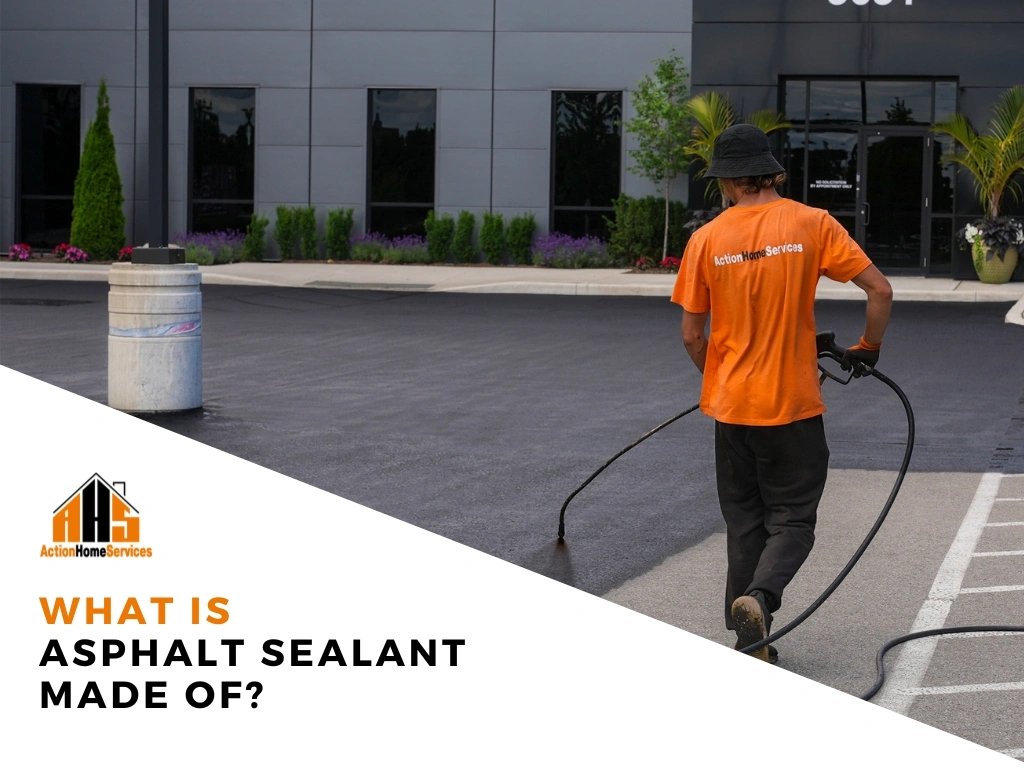
Asphalt sealant plays a key role in preserving and protecting paved surfaces. Whether it's a driveway, a parking lot, or a small private road, this dark, smooth coating is more than just for looks. It helps defend against harsh weather, water damage, UV rays, and chemicals that can wear down asphalt over time. But what asphalt sealant is made of isn’t common knowledge, and understanding it can help you choose the right product and application method for your property.
We’ll break down the key components of asphalt sealant and what they each do to contribute to long-lasting protection.
1. Bitumen: The Backbone of Oil-Based Sealants
Let’s start with bitumen, also known as asphalt cement. This is the thick, tar-like substance at the heart of oil-based sealants.
What is it?
Bitumen is a petroleum byproduct that serves as the primary binder in many sealants. It's dark, sticky, and highly adhesive.
Why it matters
Bitumen is what gives oil-based sealants their strength and durability. It creates a strong bond with the asphalt surface, forming a solid barrier that stands up to vehicle traffic, rain, and sun exposure. If you’ve ever wondered what asphalt sealant is made of when it needs to last for years, bitumen is the star ingredient.
2. Emulsifiers: The Mixer
Next up are emulsifiers, which play an important behind-the-scenes role.
What do they do?
Emulsifiers help blend the other ingredients, especially in water-based sealants. Since bitumen doesn’t naturally mix with water, emulsifiers allow for an even, stable mixture.
Types of emulsifiers
Depending on the sealant type, emulsifiers can be either water-based or oil-based. Their main job is to keep everything uniform so the sealant goes on smoothly and dries evenly.
Without emulsifiers, you'd end up with a sealant that's clumpy or inconsistent, and that means uneven protection.
3. Fillers: For Body and Texture
Ever noticed that sealants have a slightly gritty texture? That’s the fillers talking.
What are fillers made of?
Common fillers include finely ground sand, silica, or other natural minerals.
What is their role?
Fillers make the sealant thicker and more durable. They add weight and texture, helping with durability and skid control. The added grit also gives vehicles grip, especially in wet or cold conditions.
If you're curious about what asphalt sealant is mostly made of, fillers definitely pull their weight.
Book our Luxury Driveway Sealing Service for double the protection, for double the length of time!
4. Polymers: Strength & Flexibility
Polymers are synthetic materials added to the mix to help sealants perform better in extreme conditions.
What they do
Polymers improve flexibility, which is crucial in areas with temperature changes. Asphalt surfaces naturally expand and contract with the weather, and polymers help the sealant stretch and move without cracking.
Other benefits
They also enhance adhesion, helping the sealant stick firmly to the pavement. Plus, they increase durability and reduce how often you’ll need to reapply the sealant.
When you're thinking about what asphalt sealant is made of for long-term use, polymers make a big difference in how long the surface stays protected.
5. Water: The Boss of Water-Based Sealants
Water-based sealants are exactly what they sound like - sealants where water is used as the carrier for the other ingredients.
Why water?
It’s eco-friendlier than petroleum-based carriers and gives off fewer fumes during application.
How it works
Once applied, the water evaporates, leaving the protective layer behind. This type of sealant is easier to clean up and less harsh on the environment, but it typically needs reapplication more often than oil-based types.
Understanding the role of water helps complete the picture of what asphalt sealant is made of, especially for people looking for a more environmentally conscious choice.
6. Additives: The Performance Enhancers
To make sealants even more effective, manufacturers include a variety of additives.
Common additives in asphalt include:
- UV stabilizers to reduce sun damage
- Antioxidants to slow down material breakdown
- Drying agents to help the sealant cure faster
Why they matter
These small but powerful ingredients fine-tune the sealant’s performance. They help it last longer, dry faster, and hold up better in all kinds of weather.
Additives may only make up a small part of what asphalt sealant is made of, but they can greatly extend the life of the final product.
7. Colouring Agents: Finishing Touch
Most people recognize asphalt sealant by its smooth, black appearance. That colour doesn’t happen by accident.
What they do
Colouring agents, usually carbon black or other pigments, give the sealant its signature finish. This deep black colour helps restore the appearance of aged pavement and gives it a clean and sleek look.
Beyond aesthetics
A darker surface also absorbs more heat, which can help speed up the drying process in cooler temperatures.
Final Thoughts
Knowing what asphalt sealant is made of helps you make better decisions when it’s time to protect your driveway or parking area. From bitumen and water to polymers and fillers, each ingredient has a specific role to play. Together, they create a tough, flexible barrier that keeps your asphalt looking good and holding strong for years. For more information on professional asphalt sealing services at AHS, don’t hesitate to contact us.


